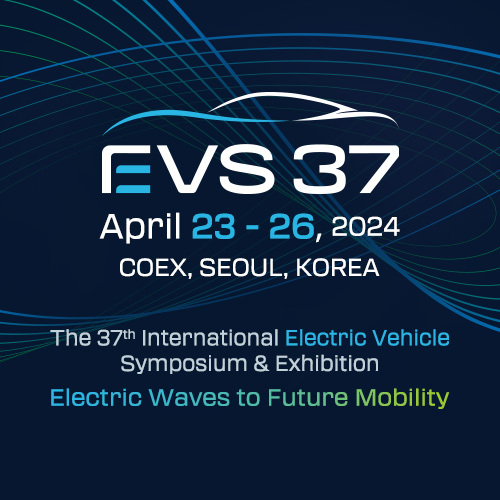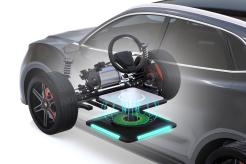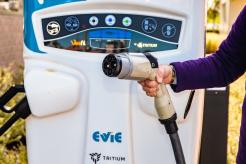Fleet operators are embracing electrification thanks to corporate sustainability initiatives, emission reduction legislation, infrastructure improvements, and cost savings, among other drivers. Regardless of fleet size, it just makes good financial and environmental sense.
However, deciding to switch from internal combustion vehicles to EVs requires significant planning. Here’s a review of why companies are changing their fleets and essential factors to consider when transitioning to an EV fleet.

(Image Source: Freepik)
Why Switch to an EV Fleet
Understanding the benefits of switching to an EV fleet can help fleet managers stay focused, stay on schedule, and make good decisions in response to challenges throughout the transition.
Expanded Vehicle Options
Many fleets are now switching to EVs because of increased vehicle options. Recently, the EV market has expanded from a handful of models to dozens, including many well-suited for fleet use due to size, reliability, and range. Practically all business categories have good choices now, from local couriers to cargo delivery services to over-the-road semi-trucks.
Improved Charging Infrastructure
A perceived lack of charging infrastructure has long been an EV adoption deterrent for businesses and consumers. With increasing demand, the number and location of public charging stations have started growing substantially. Recent legislation at the federal level is expected to create a surge in charging station expansion by providing massive incentives and tax credits for new charging station infrastructure installation throughout the country.
The higher need for charging station equipment has also brought down the cost. Level 2 EVSE charging equipment now runs $2,500-$5,500 per charging station, considerably less than it did several years ago, and level 3 DC fast charging equipment averages about $40,000 per station.
Though installing private charging stations is an added investment for the fleet owner, they eventually produce a total return on investment in terms of time savings, cost reductions, and improved productivity.
Greater Vehicle Performance
EVs have superior torque to diesel trucks and other conventional combustion vehicles, making them ideal for transportation, logistics, and trucking fleets. Switching to EVs can give particular fleets, such as freight and light cargo haulers, a significant improvement in vehicle performance and productivity.
 Lower Fuel Costs
Lower Fuel Costs
Immediate fuel savings is often the #1 reason fleets transition to EVs. Though power costs are rising like other business expenses, electricity costs are generally much lower than gasoline and diesel, especially considering EV engine efficiency. As engine sizes increase, the fuel consumption of combustion engines rises faster than EVs.
(Image Source: Wolfgang Hasselmann, Unsplash.com)
Lower Insurance Rates
Insurance brokers are increasingly offering discounts for EVs and “green fleets.” Because EVs typically have a higher appraised value than their internal combustion counterparts, and repairs often cost more, standard insurance rates can be higher. However, insurance companies recognize that EVs also see far fewer breakdowns and parts wear, hence the availability of discounts for those switching from conventional vehicles.
Reduced Maintenance Costs
Maintenance is essential to managing a fleet to ensure productivity and profitability. Compared to complex combustion engines, fleet maintenance is much less time-consuming and costly for EV fleets.
Preventive maintenance that’s routine with combustion engines, such as oil changes, is nonexistent. Instead, EVs need little more than periodic battery checks, brake fluid, coolant, and occasional brake pad replacements (and even then, since EVs have regenerative braking, brake parts wear out less often). All of this means not only less expense but less downtime as well.
Less Environmental Impact
EV fleets can expand a company’s market share and ability to attract and retain top talent. Since transportation accounts for 70% of U.S. petroleum consumption, EV fleets reduce reliance on carbon fuels. Many customers now proactively choose vendors that make sustainable business decisions, and many workers look for environmentally responsible employers.
Top Considerations for Transitioning to an EV Fleet
Total Cost of Ownership
It goes without saying that before proceeding with the transition, fleet owners must ensure that it will be cost-effective under their specific circumstances by comparing the total cost of ownership (TCO) between conventional fleet vehicles and EVs.
Currently, EV purchase prices are higher than comparable conventional vehicles, but fuel, maintenance, and other operating costs for EVs may be lower. EVs may also qualify for government, non-profit organizations, and power company incentives, including upfront funding, reimbursements, discounts, and tax credits.
Driving Distance
Knowing the average and total distances employees will drive fleet vehicles daily, weekly, and annually can help plan fleet needs and mitigate charge anxiety. Choosing EVs that can achieve a higher range on a single charge will be more critical to some fleets’ needs and circumstances than others.
Idling Time
Effective route planning that accounts for recharging needs requires insight into driving habits, such as typical idling occurrences during an average trip. Fleet owners must also consider the weather’s effect on idling time. Each fleet will have different idling behaviors depending on location, area population, daily congestion, and the services provided. Truck tracking data is essential to making informed decisions.

(Image source: Greenlots.com)
Charging Stations
Having determined the EV fleet’s driving distances and habits, fleet management can pursue an effective, reliable charging strategy.
1. Type and Quantity
Like all EV owners, fleets have three EVSE options for charging their vehicles. In addition to choosing the EVSEs best suited to their needs, fleet managers must consider the number of cars, duty cycles, and maximum range to determine how many charging stations they need to install.
2. Placement Locations
The fleet depot is the best place to locate charging stations for vehicles with relatively short average daily driving habits. Some fleets that allow drivers to take their cars home at night may set up charging stations at driver residences. In addition to fleet-owned charging stations, drivers should be aware of public charging stations along their daily routes approved for use in an emergency.
Incentives
Various local, state, and federal financial incentives promote EV adoption. Except for Tesla and GM products, for example, a $7,500 federal tax credit applies to all new EV purchases, whether intended for commercial or personal use and in addition to any state or local incentives.
Fleet Tracking
Another factor when changing to an EV fleet is the data collection required for a smooth transition. Tracking and recording driving distances, EV usage, and energy consumption are necessary to route planning and financial control. Collecting drive-cycle data, telematics, and GPS tracking are needed to help fleet managers alleviate the everyday challenges of operating an EV fleet, particularly charging frequency and location.
Conclusion
The nation’s ground transportation fleet currently totals more than 8.1 million vehicles. McKinsey predicts that by 2030, EV fleets will have a 15-25% lower TCO than those with ICE vehicles. With numerous factors accelerating the development of transport electrification, we can expect EV fleets to become the norm much faster than any of us thought just a few years ago.
Are you interested in learning more about EV fleets and business opportunities in EV charging? Join us at the upcoming EV Charging Summit & Expo!






